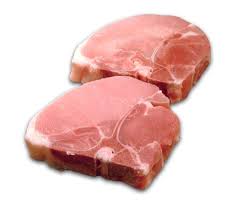|
Publisher Item Identifier (pii) / Research Title
|
Article Information /
Abstract
|
Download
|
|
pii: S222877011400009-4
Concentration of nitrate and nitrite in some selected cereals sourced within Kaduna state, Nigeria

|
Original Research, D9
Abdulrazak S., Otie D., Oniwapele Y.A.
Online J. Anim. Feed Res., 4(3): 37-41, 2014.
ABSTRACT: Concentrations of nitrate and nitrite ions were assessed in maize, millet, guinea corn and wheat obtained in Kaduna State, Nigeria. The results showed that nitrate ion concentration for white maize, red maize, agric millet, normal millet, white guinea corn, red guinea corn, and wheat were 4.5 mg/g, 4.2 mg/g, 15.5 mg/g, 21.3 mg/g, 6.3 mg/g, 4.0 mg/g, and 3.0 mg/g respectively. While the nitrite ion concentration for white maize, red maize, agric millet, normal millet, white guinea corn, red guinea corn, and wheat were 0.035mg/g, 0.030mg/g, 0.074 mg/g, 0.087 mg/g, 0.050 mg/g, 0.050 mg/g and 0.0154 mg/g respectively. The results obtained fall below the WHO’s Acceptable Daily Intake (ADI) which is 40-100 mg/g for nitrates, and fall within range for nitrites which is 0.03 to 2.6 mg/g. This means that the nitrate and nitrite contents of maize, guinea corn, millet and wheat grown in Kaduna State may not presently pose a health hazard in the human population.
Keywords: Nitrate, Nitrite, Kaduna State, Cereals, Soils
|


|
|
pii: S222877011400010-4
Retrospective study of antimicrobial residues and resistance in swine in Aba Abia state Nigeria

|
Original Research, D10
Nwiyi, P.
Online J. Anim. Feed Res., 4(3): 42-45, 2014.
ABSTRACT: Antimicrobials are used by livestock farmers to prevent and control infection. Antimicrobials are also included at sub-therapeutic doses in animal feed as growth promoters and to improve feed efficiency in intensive farming. The aim of this study was to evaluate the antimicrobial residues and resistance that could arise due to antimicrobial use in swine. The study was carried out between September 10th and December 10th 2013 in some selected swine farms in Ogbor Hill water side in Aba, Abia state. The study involved visiting the various farms, evaluating the records of previous treatment. Also the state zonal veterinary clinics visited and record of farms was collected for analysis. From the result obtained, in raining season in a given year, the frequency of tetracycline usage recorded 83.3%, penicillin recorded 75.0%, while sulfonamide recorded 25.0%. Tylosin and ivermox were the least and recorded 8.4% usage each. The swine treatment was done by the farmers hence there was consistent over-dosage of antimicrobials to the pigs as the manufacture’s guide was not complied with. The report from the records showed that some of the pigs were slaughtered and sold in the market at any time without recourse to drug with-draw. This result could be one of the responsible reasons for antimicrobial residues and resistance in swine and indeed livestock.
Keywords: Antimicrobial residues, Swine, Resistance, Abia state.
|


|
|
pii: S222877011400011-4
The structures of breeding dairy cattle in the Sahara: The status in the M’zab valley (Southern Algerian Shara)

|
Original Research, D11
Bensaha H., Arbouche F.
Online J. Anim. Feed Res., 4(3): 46-50, 2014.
ABSTRACT: The dairy milk sector is a strategic sector in the Algerian agriculture with 2.39 billion liters in 2009, 2.7 billion in 2010 and 2.93 billion in 2011. The milk collection reached 572 million liters in 2011. The enthusiasm for milk production in the M’zab valley led to the creation of many cattle farms. The objective of this study is to investigate the dairy cattle infrastructures and its impacts on milk production. The conducted through a questionnaire over 53 farms representing 57.7% of the exploitations in the M’zab valley. The results show that 25% of farms have mechanical means for milking (milking trolley) and that 92% of buildings are equipped with troughs in a poor condition and do not meet accepted standards. All farms surveyed practice stalls. 32.92% of the buildings are designed with unsuited materials (tin, zinc, shrubs trunks, etc.), 49.88% are designed with a blend of modern (blocks) and traditional (Reeds, Diss) materials, and 17.20% are built with hard poles, walls in cement mortar and asbestos cement roof. The sanitary and hygienic appearance is a function of investments, which are supported by state subsidies in the context of the promotion of the dairy industry. This investigation gave rise to a set of proposals for the upgrading and modernization of the dairy cattle infrastructures, which meet specific climatic conditions, in order to improve the quality and the quantity of milk production in the region of the M’zab Valley with specific climatic conditions.
Keywords: Dairy cattle exploitation, Equipment, Livestock building, Hygiene, Saharan region, Valley of M’zab
|


|
|
pii: S222877011400012-4
The growth and reproductive performance of different breeds of rabbits kept under warm and humid environments in Ghana

|
Original Research, D12
Apori SO, Hagan JK and Osei D.
Online J. Anim. Feed Res., 4(3): 51-59, 2014.
ABSTRACT: The potential of rabbit production in solving the problem of inadequate animal protein supply cannot be overemphasized. A study was therefore conducted to assess the growth and reproductive performances on 488 bunnies and 87 does of Blue Vienna and 474 bunnies and 80 does of Chinchilla rabbits reared under hot and humid environment in Ghana. The reproductive performance of the two breeds, in terms of litter size at birth and weaning, litter weight at birth and weaning, kindling interval, age at first kindling and gestation length as influenced by season of kindling (rainy and dry), year of kindling (2005-2012) and parity (first to sixth and over) were determined. The overall least square means for litter size at birth, bunny weight at birth, litter size at weaning, bunny weight at weaning, gestation length, kindling interval, age at first kindling, pre-weaning growth rate and post-weaning growth rate of Blue Vienna were 5.6±0.1, 51.3±0.3 g, 4.4±0.1, 601.5±0.9 g, 30.0±0.1 days, 94.7±0.4 days, 159.7±0.4 days, 13.1±0.1 g/day and 15.4±0.1 g/day respectively. Those of Chinchilla were 5.9±0.1, 54.2±0.3 g, 4.8±0.1, 601.9±0.9 g, 30.1±0.1 days, 94.6±0.3 days, 159.8±0.2 days, 13.0±0.1 g/day and 15.3±0.2 g/day respectively. Year of kindling had significant (P<0.05) effect on litter size at weaning, litter weight at kindling, gestation length, age at first kindling, post weaning growth rate, body weight at 14 weeks and mortality in both breeds. Season of birth on the other hand had significant effect (P<0.05) on litter weight at birth, gestation length and mortality in both breeds. The number of times the doe has kindled (parity) significantly (P<0.05) influenced all the parameters apart from kindling interval, gestation length, age at first kindling and pre-weaning growth rate performance of both breeds. The growth performances of the breeds studied were indications of their potential of being developed in future into meat types.
Keywords: Chinchilla, Blue Vienna, Growth, Reproduction, Litter Size, Bunnies.
|


|
|
pii: S222877011400013-4
Effective methods for appropriate diagnosis of brucellosis in humans and animals (review article)

|
Review Article, D13
Molavi MA., Sajjadi HS., Nejatizade AA.
Online J. Anim. Feed Res., 4(3): 60-66, 2014.
ABSTRACT: Brucellosis is one of the most common diseases among human that identification and control of disease transmission methods can promote public health. Clinical signs alone are not sufficient for brucellosis diagnosis. Hence, a sensitive, specific, rapid and inexpensive method is required. Early and appropriate diagnosis of this disease is effective in improving public health as well as disease control and eradication. Several serological tests for probable diagnosis of Brucella infection were used in evaluation of antibodies against Brucella. Using new methods such as Elisa has higher sensitivity and specificity than standard SAT test and complement fixation which can show both G and M immunoglobulins. It is also suitable for examining certain class of immunoglobulin. Research and studies have shown that ELISA is a complete method for in vitro detection of chronic disease, especially when other tests results are negative. In addition to this method, all unique and specific immunoglobulin in tested serum appear with high speed and accuracy. Another diagnostic method is PCR, which has higher sensitivity and specificity in comparison with serologic methods for diagnosis of human brucellosis. PCR shows similar sensitivity as 16srRNA using L7/L12 gene. It can be used in diagnosis of human brucellosis. Another diagnostic method is identification of different forms of IL-10 gene, which is a cytokine. It inactivates macrophages and infects the susceptible subject with brucellosis. Therefore, identification of different forms of IL-10 gene is considered as effective method for diagnosis of the disease. It’s recommended to use this new and effective method because many of these methods can overcome limitations of traditional methods.
Keywords: Brucellosis, Diagnosis, Human, Animal
|


|
|
pii: S222877011400014-4
Influence of Weaning Age on the Organoleptic Properties of Pork

|
Original Research, D14
Moreki J.C., Perfect L., Machete J.B., Montsho T., Ganelang B. and Sello N.
Online J. Anim. Feed Res., 4(3): 67-73, 2014.
ABSTRACT: A trial was conducted to compare organoleptic properties of piglets weaned at 21, 28 and 35 days of age and slaughtered at 70 kg target body weight. A total of 24 pigs (Landrace x Large white x Topigs x Topigs cross) which were weaned at three weaning ages were randomly selected and slaughtered upon reaching target body weight. Each treatment comprised three replicates of two animals each. Out of this number, 18 carcasses were selected for organoleptic evaluation. Piglets were provided with creep diet from 10 to 35 days, a weaner diet from 36 to 70 days of age and pig grower diet from 71 days to target slaughter weight. Thereafter, pigs were sacrificed and their carcasses chilled for 20 hours at 5 0C before cuts were removed. The four meat cuts (the pork chop, chuck, Top sirloin and pork leg) were removed, cooked and tested for organoleptic evaluation, i.e., texture, tenderness, juiciness, appearance and flavour. Data on organoleptic properties were analysed using frequencies and percentages in IBM SPSS statistics for Windows, version 20.0. Results showed that the panelists preferred pork from pigs weaned at 28 days followed by 21 days and 35 days. The appearance of pork was the most preferred characteristic across all weaning periods as it showed high rankings by panelists while juiciness appeared to be the less preferred attribute. These results suggest that weaning age influenced organoleptic properties of pork with 28 days weaning age giving better results.
Keywords: Ad libitum, Organoleptic Properties, Piglets, Pork, Weaning Age
|

 |
|
|
|
|
|
|
|
|
|
|
|
|
|
|
|

